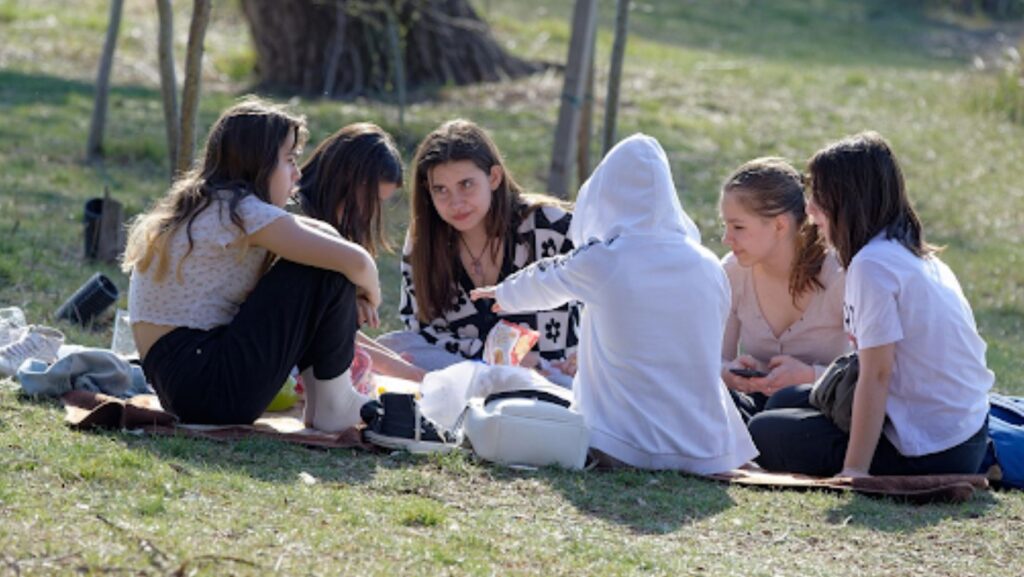Teenagers today spend a significant amount of time sitting at school, at home, and in front of screens. While technology has its place, the way teens sit and move is being affected. More and more young people are showing signs of poor posture, starting earlier than many expect. The good news is that these problems are often easily managed when caught early.
An osteopath can help your teenager feel better, move more easily, and avoid long-term issues. Let’s explore why teenage posture matters, the warning signs, and how osteopathy can help.
Why Posture Matters in Teenagers
The teenage years are a time of rapid change. Bones proliferate, and sometimes, muscles don’t keep up. A teenager’s coordination may not be fully developed, and their awareness of sitting or standing might not be strong.
Poor posture isn’t just about looking slouched. It can cause muscle tension, aching joints, stiffness, or even affect how well someone can breathe or concentrate. Over time, these habits can become harder to fix, so support during the teen years is essential.
If poor posture continues unchecked, it may contribute to long-term issues such as chronic neck or lower back pain. In some cases, it can also play a role in conditions like scoliosis becoming more noticeable.

What Causes Poor Posture in Teenagers?
There are a few key reasons posture becomes a problem during the teenage years:
- Too much screen time – Constant phone use encourages a forward head position and rounded shoulders. Teens often hold their devices low, pulling their neck and spine forward.
- Long periods of sitting – Whether in school, on the sofa, or at a desk doing homework, all that time adds up. Without breaks, posture tends to get worse over the day.
- Heavy or uneven school bags – Carrying a backpack on one shoulder can cause an uneven load on the spine, affecting balance and movement.
- Lack of physical activity – When teens aren’t moving enough, their muscles become weak or tight in the wrong areas.
- Rapid growth – A growth spurt can lead to temporary clumsiness or awkward movement, making slouching more likely.
Even the classroom environment can complicate things. Chairs and desks in schools are not always designed for good sitting habits, especially when children of different heights use the same furniture.
Signs You Might Notice
Parents often ask what signs to look out for. These may include:
- Slouching when standing or sitting
- Leaning on furniture instead of standing upright
- One shoulder or hip rests higher than the other
- Complaints of regular back, neck, or shoulder aches
- Headaches are caused by strained neck and shoulder muscles.
- Difficulty focusing after long periods of sitting still
If you notice more than one of these, it may be time for a check-in with a professional.

How Osteopaths Can Help
Osteopaths examine the body and how its parts work together. They will assess how your teenager stands, sits, and moves, helping to spot tight muscles, stiff joints, or uneven movement patterns.
Osteopathy is a hands-on treatment. Techniques include gentle stretching, soft tissue massage, or joint mobilisation. These methods help relieve tension and support healthy alignment.
Osteopaths also offer straightforward advice to support everyday posture. This might include:
- Practical tips for setting up better desks
- How to carry a school bag the right way
- Home exercises to support strength and flexibility
- When and how to take screen breaks
- Postural tips for sports, hobbies, or gaming
Osteopathy is non-invasive and drug-free. You can read more about its benefits and safety on the NHS website.
Helping Your Teen at Home
There’s a lot you can do as a parent. Start with these steps:
- Create a good desk space – Make sure their chair supports the lower back and their screen is at eye level.
- Encourage regular movement – Five minutes every hour goes a long way. Set timers if needed.
- School bag checks: Make sure the weight is evenly distributed. Use both shoulder straps; the bag shouldn’t hang below the waist.
- Model good habits – Teens often copy what they see. If you sit and stand well, they’re more likely to follow.
- Do family stretches or walks – Make movement normal and social rather than a chore.
You don’t need expensive equipment. Even rolled-up towels or simple stretches using a wall can make a difference.

When Should You See an Osteopath?
If your teenager is in pain or their posture seems to be affecting daily life, an osteopath can help. You don’t need a referral from your GP.
All osteopaths practising in the UK must be registered. You can check the General Osteopathic Council register to find a qualified local provider.
For example, a Croydon osteopath such as Arc Osteopathy offers a calm and professional space where teenagers can be assessed gently and without pressure.
Final Thoughts
Posture issues don’t mean something is wrong with your teenager; they’re just part of growing up in a world where we all sit too much. The key is noticing changes early and acting on them. A few minor adjustments and professional advice can make a big difference to your child’s comfort and health.
Working with an osteopath, whether for a one-off check-up or ongoing support, can give both teens and parents peace of mind.
